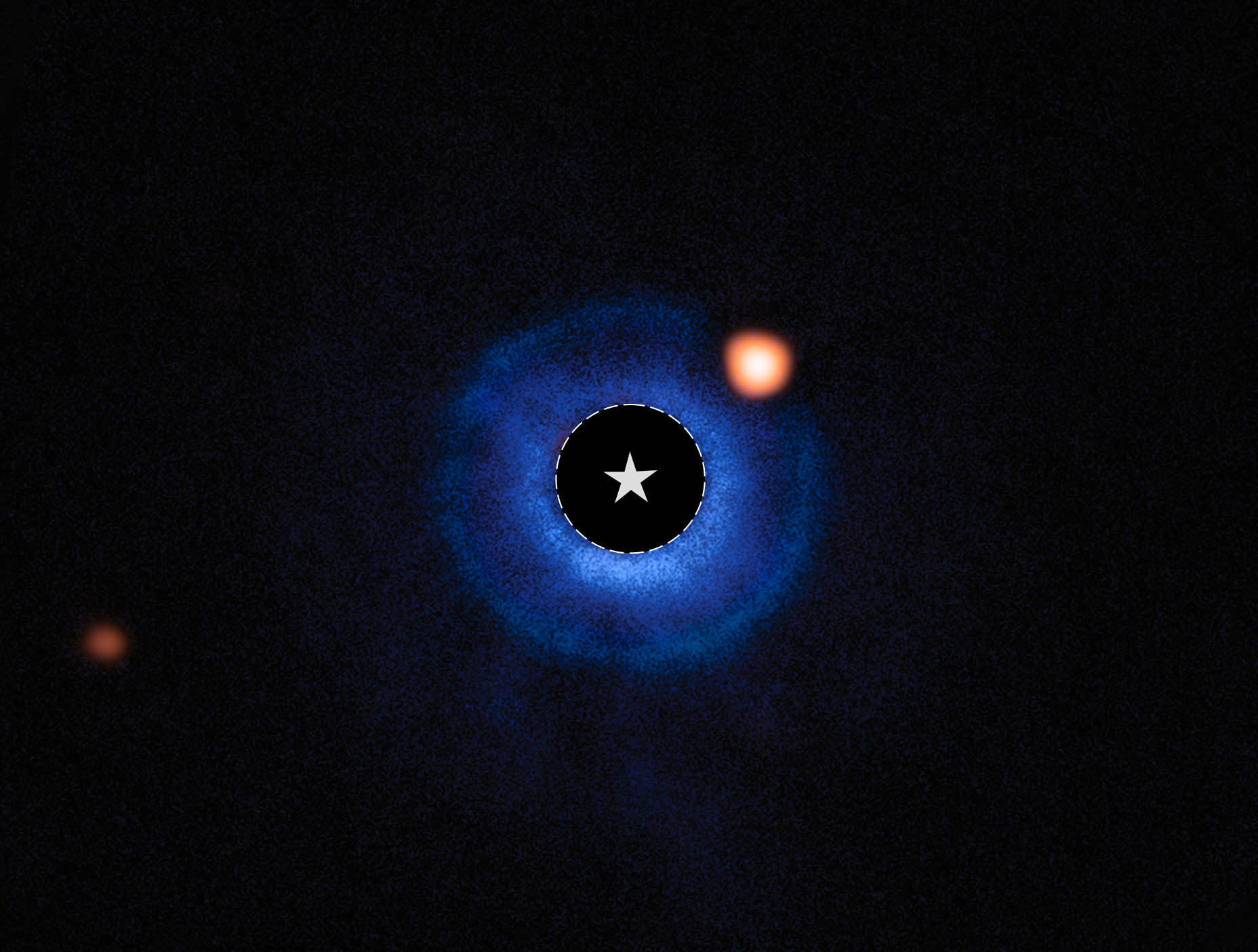Likely Saturn-Mass Planet Imaged by NASA Webb Is Lightest Ever Seen

Astronomers using NASA’s James Webb Space Telescope have captured compelling evidence of a planet with a mass similar to Saturn orbiting the young nearby star TWA 7. If confirmed, this would represent Webb’s first direct image discovery of a planet, and the lightest planet ever seen with this technique outside the solar system.
The international team detected a faint infrared source in the disk of debris surrounding TWA 7 using Webb’s MIRI (Mid-Infrared Instrument). The distance between the source and TWA 7 is estimated to be about 50 times the distance of the Earth from the Sun. This matches the expected position of a planet that would explain key features seen in the debris disk. The results published Wednesday, June 25 in the journal Nature.
Using MIRI’s coronagraph, the researchers carefully suppressed the bright glare of the host star to reveal faint nearby objects. This technique, called high-contrast imaging, enables astronomers to directly detect planets that would otherwise be lost in the overwhelming light from their host star. After subtracting residual starlight using advanced image processing, a faint infrared source was revealed near TWA 7. The team ruled out an object in our solar system that happened to be in the same part of the sky as the source. While there is a very small chance that it is a background galaxy, the evidence strongly points to the source being a previously undiscovered planet.
The source is located in a gap in one of three dust rings that were discovered around TWA 7 by previous ground-based observations. The object’s brightness, color, distance from the star, and position within the ring are consistent with theoretical predictions for a young, cold, Saturn-mass planet that is expected to be sculpting the surrounding debris disk.
“Our observations reveal a strong candidate for a planet shaping the structure of the TWA 7 debris disk, and its position is exactly where we expected to find a planet of this mass,” said Anne-Marie Lagrange, CNRS researcher at the Observatoire de Paris-PSL and Université Grenoble Alpes in France, lead author of the paper.
“This observatory enables us to capture images of planets with masses similar to those in the solar system, which represents an exciting step forward in our understanding of planetary systems, including our own,” added co-author Mathilde Malin of Johns Hopkins University and the Space Telescope Science Institute in Baltimore.
Initial analysis suggests that the object — referred to as TWA 7 b — could be a young, cold planet with a mass around 0.3 times that of Jupiter (about 100 Earth masses, or one Saturn mass) and a temperature near 120 degrees Fahrenheit (47 degrees Celsius). Its location aligns with a gap in the disk, hinting at a dynamic interaction between the planet and its surroundings.
